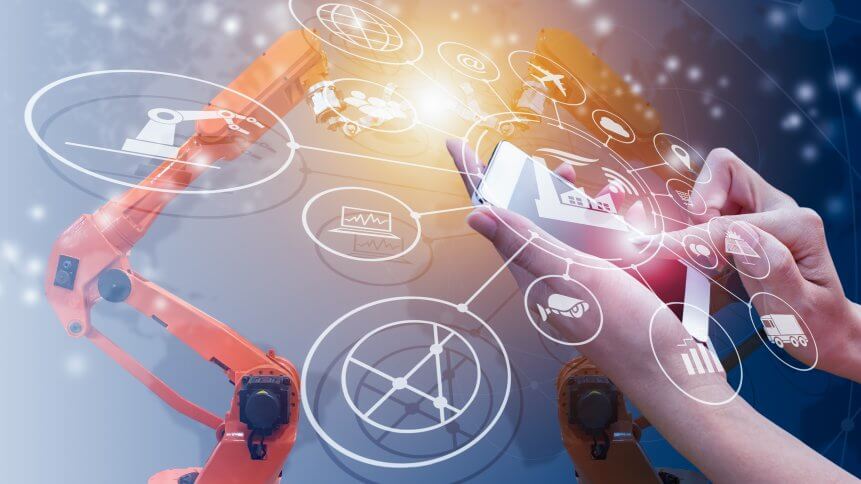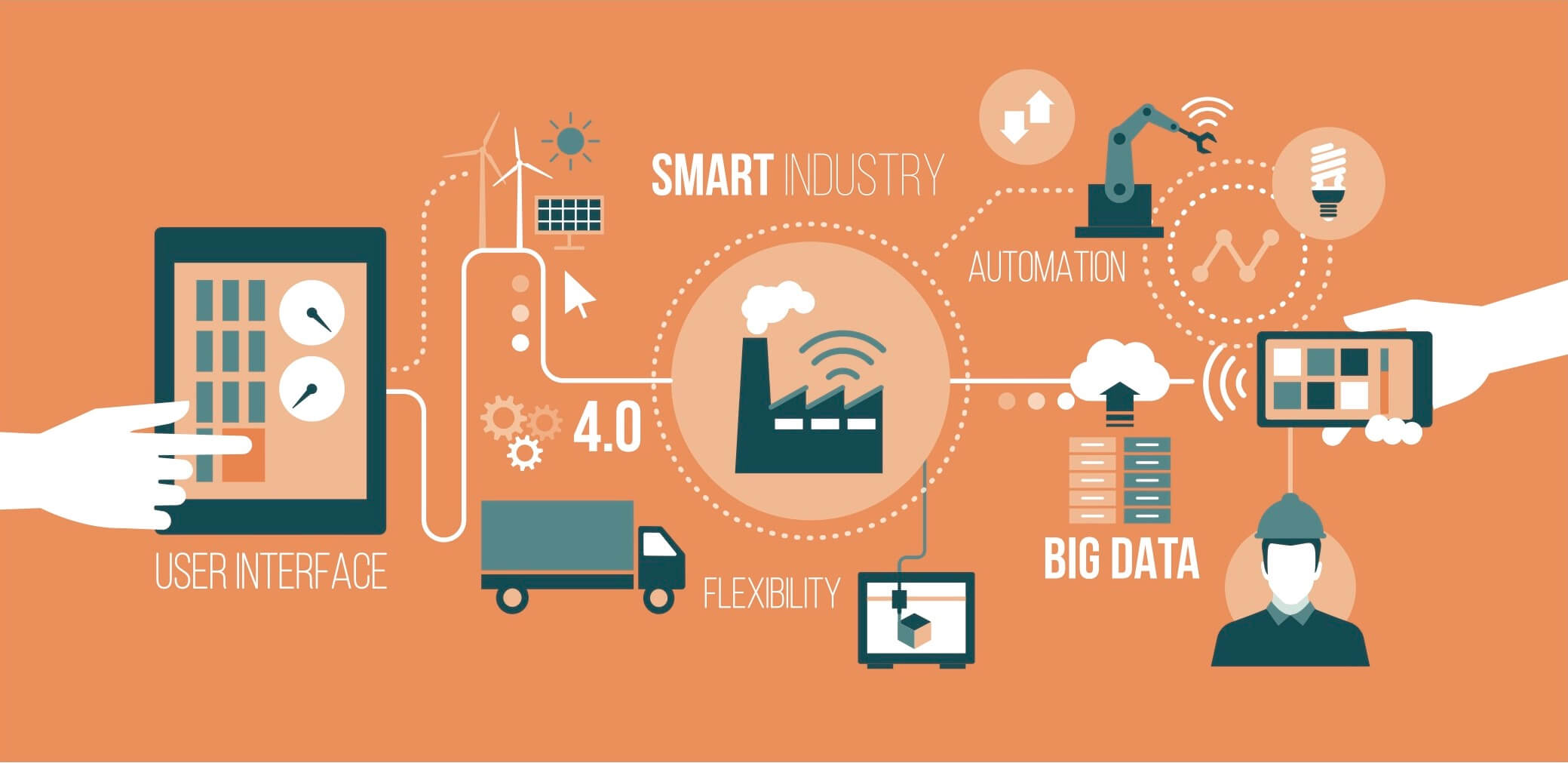
Successful implementations of industrial technology require a different mindset from that of technologists who have been tasked with installing a new software product for the enterprise.
The industrial internet of things (IIoT) represents the case in point, where technology empowers and aids physical systems, rather than being the solution as of itself, like a cloud-based storage system or a powerful accountancy application.
Industrial technologies tend to be very much platform-specific– that is, designed with a particular set of hardware or process in mind. To this end there has developed, over the years, a marked difference between what’s become known as operational technology (OT) and information technology (IT).
In the digital age, the actual physical differences at the level of the microchip and printed circuit board are minimal– in fact, the system on chip, with embedded Linux OS that controls smart mining pit props may well use identical code libraries as a human resource management platform. But differences in purposes & uses of technology in industry have been different enough for the rift to develop.
With what’s become known as Industry 4.0– often comprising of a largescale implementation of IIoT– the two branches of technology have been brought back together, especially with regards connecting OT to IT, so that the latter can help create maximum ROI using the virtual reams of data produced by connected industrial devices.
In industry, equipment tends to be purchased for use over many years or decades. This is unlike the mentality in pure IT environments, where a refresh cycle for equipment can be as little as two or three years. When legacy IIoT devices connect to massive technology infrastructures, there are often problems associated with communications protocols.
OT equipment has tended to use a number of proprietary protocols developed for specific purposes. Known as Fieldbus protocols, they can be industry-specific, manufacturer-specific or even machine-specific. To draw maximum return on the often significant investment made in equipment, next-gen IIoT control and monitoring systems need not only to be able to interpret and engage in two-way communications, but networked systems need to be able to cope with the massive influx of data. Looking ahead maybe just two or three years, it’s more than likely that this influx will not abate; in fact, rates of required data throughputs will indubitably increase.

Some suppliers are now offering IIoT-specific gateways which simplify data acquisition by doing the heavy lifting of protocol translation; from Modbus to TCP, for example. Furthermore, the same devices are keying into prevalent edge computing methods and can analyze the data so, according to preset rules, they only pass on data to the cloud (or the remote data center) that’s relevant. This could be, for example, where sensor data indicates potential or actual problems, or there’s need for human intervention of decision-making.
By optimizing communication transition from OT to IT, the latest IIoT suppliers help maximize deployments’ performance, not only with regard to uptimes and working efficiencies but also to offsite or edge-based data processing. If the key to wringing out maximum productivity is in the technology, industry needs specialist help, hardware and software.
In industry, safety has always been a primary concern. Physical safety systems that accurately report and can attenuate machinery according to conditions are incredibly important– and these systems are increasingly data-driven. But as well as physical safety, there are some cybersecurity concerns too, specific to IIoT and their supporting infrastructures.
Proprietary network protocols and systems in industrial settings are not, by default, hardened to data hacking or compromise. In most cases, there’s no on-device encryption in legacy equipment, and even first-line safeguards like user authentication are missing.
Industry, then, is looking to IIoT suppliers to ensure that machinery of all generations can operate safely, both onsite at the point of installation, but also with regard to data security on the local edge, and across the cloud.
In specific industries, there’s a further concern for compliance and regulatory observance. Where IIoT devices handle sensitive data (such as in medical settings), there is an increasing number of strictures placed on businesses & organizations with regard to data protection. Where once data from machinery & equipment was localized and offline, data movement is now commonplace– and data is susceptible unless proper steps are taken. Here too, next-gen IIoT control, monitoring and information interchange systems can play a significant role.
Here at TechHQ, we’ve found three suppliers of the very latest in IIoT and specialist control, monitoring– and value-driving systems available in the market today.
Moxa’s IIoT gateways, data acquisition, and communications equipment and software are designed specifically for industrial settings. Its solutions support legacy systems as well as new platforms and equipment coming online as the enterprise grows and evolves.
The platform provides seamless integration of IT and OT in deployments of any scale of IIoT, in even the most inhospitable environments.
The company is aware that the keys to successful IIoT depend on data integrity, unification, protection, and intelligent interchange. As an example, Moxa’s gateway solution is ready to go out-of-the-box and can acquire & parse device protocols (Modbus and MQTT, for example) with effectively negligible lag or overheads. Plus, it provides several APIs for secure development of bespoke solutions for ageing plant.
As companies’ networks begin to feel the burden of massive data flows from connected machinery like equipment, sensors, and controllers, information processing intelligently at the edge requires a specialist provider. Moxa has many years’ experience in this field and can help organizations scale their deployments up to large enterprise level. Multiple edge installations and cloud or bare-metal collation points are as easily managed as a single remote install.
Additionally, for smaller concerns, Moxa even offers a ‘Starter Kit’, which can be used to begin the process to industrial digitization, or as a proof of concept to help ‘sell’ IIoT into the enterprise’s decision- makers.
To learn about the company, get the lowdown from Moxa’s website.
The stalwart of industry, Siemens, has a history that goes back close on 200 years, with interests in healthcare, utilities, construction, finance, and robotic automation. It’s only natural, therefore, that such a company would also offer a broad-ranging offering in technology solutions specific to IIoT.
MindSphere is Siemens’s cloud-based IIoT operating system which can be deployed across all of the company’s own solutions but also is platform agnostic in that it can be leveraged to use with other manufacturers’ and suppliers’ products, too.
At the edge, the MindSphere cloud is connected via MindConnect devices, which are Siemens’s unifying gateway devices with IIoT specialism.
The MindSphere platform comprises many components, which can be deployed as modules, depending on the setting being supported. Specific solutions exist for logistics, stock control systems, and asset management, and the whole is aided by an integrated predictive learning facility – useful across the board, but especially for proactive machine maintenance.
MindSphere can be accessed via an open API that adheres to accepted standards and protocols, so even the most esoteric IIoT facility can deploy the company’s resources and platform.
The platform also offers a large number of pre-built integrations with common enterprise-class software, so your next-gen industrial facilities can ‘plug in’ directly to existing tech like ERP, fleet management platforms, finance packages and so on.
The Minneapolis-headquartered Digi offers a range of solutions for the organization wishing to implement a digital transformation from the ground up. It supplies hardware systems which conglomerate signaling from IIoT devices new and old, plus a range of embedded systems of its own for use in a variety of settings.
As well as wi-fi modules for IIoT, its cellular systems utilize 3G, 4G LTE and LTE-Advanced communications for commercial and industrial settings. Cell systems are often deployed where long-distance communications are paramount, but also as failover for wi-fi or cabled comms in mission-critical environments.
Digi has various specialisms in particular verticals such as food & beverage and healthcare, and therefore has a specific forté in areas where data governance and quality control need to be of the highest standards.
Naturally, as a large company, Digi International has concerns that span the globe– such as smart energy and next-gen connected cities. The systems that power these concepts range, of course, from mobile communications infrastructure to highly-specific monitor and control hardware.
As well as infrastructure hardware, Digi also supplies high-end data collation and reporting systems suitable for deployment in even the most rigorously-overseen industries such as healthcare and utilities.
*Some of the companies featured on this article are commercial partners of TechHQ








